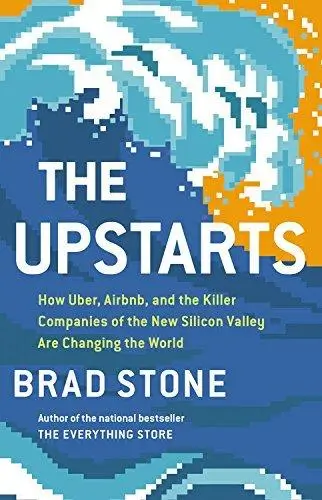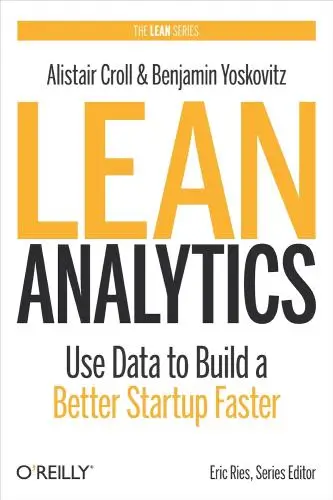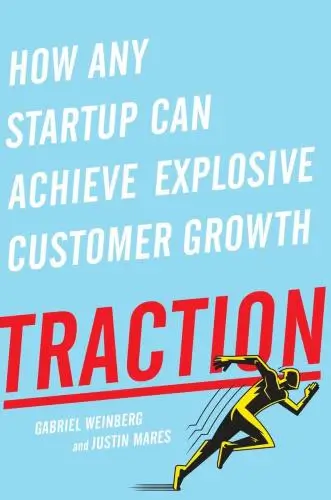Built to Sell
Creating a Business That Can Thrive Without You
What's it about?
Built to Sell by John Warrillow is a must-read for entrepreneurs dreaming of a successful exit. This enlightening book offers a step-by-step guide on transforming a dependent, owner-operated business into a thriving, independent entity ripe for acquisition. Through an engaging narrative, Warrillow shares key strategies for increasing your company's value and attractiveness to potential buyers. It's a practical roadmap to creating a business that can thrive and grow, even without its founder at the helm. Perfect for anyone looking to build a business that's not just profitable, but also sellable.
About the Author
John Warrillow is an entrepreneur and author, best known for his book "Built to Sell: Creating a Business That Can Thrive Without You", which focuses on the importance of building a sellable business. His writing offers practical advice and insights into entrepreneurship, emphasizing the value of systems and scalability.
10 Key Ideas of Built to Sell
Design Your Business to Operate Without You
Creating a business that can thrive without the constant involvement of its owner is crucial for scalability and eventual sale.
This involves setting up systems, processes, and a team capable of managing day-to-day operations independently.
The reasoning behind this is twofold: firstly, it makes the business more attractive to potential buyers, as they are investing in a self-sustaining entity rather than a job.
Secondly, it allows the owner to focus on strategic growth rather than being bogged down by operational tasks.
Learn DeeperDocument Everything: Start by creating manuals or guides for every task and operation within your business. This could range from how to open the store in the morning, to how customer complaints are handled, to the end-of-day closing procedures. This documentation ensures that anyone can step into a role and understand what needs to be done without needing to ask you directly.
Hire Strategically: Focus on hiring individuals who can not only perform their specific roles but also have the potential to manage others. Look for self-starters with leadership qualities. This way, you're building a team that can take charge, reducing the need for your constant oversight.
Implement Automation Tools: Wherever possible, use technology to automate repetitive tasks. This could be anything from scheduling software for appointments, automated email responses for common inquiries, or inventory management systems. Automation frees up you and your team's time to focus on more strategic tasks.
Regular Training and Development: Invest in regular training sessions for your team. This ensures they are up-to-date with the latest industry practices and can operate independently with confidence. It also fosters a culture of learning and growth within your business.
Set Clear Goals and KPIs: Establish clear, measurable goals and key performance indicators (KPIs) for your business and each team member. This provides everyone with a clear understanding of what success looks like and allows the business to operate towards these goals autonomously.
- Example
A coffee shop owner creates a detailed operations manual covering everything from how to brew each type of coffee to handling customer service issues, enabling any new staff member to quickly learn the ropes without direct supervision.
- Example
An online retail business owner implements an inventory management software that automatically reorders stock when levels are low, reducing the need for the owner to manually track inventory levels and place orders.
Focus on a Single Product or Service with Scalable Potential
Narrowing your business's focus to a single, scalable product or service simplifies operations, marketing, and sales efforts.
It enables you to perfect your offering and become a market leader in a specific niche.
This specialization makes your business more appealing to buyers who prefer companies with a clear value proposition and established market position.
Additionally, it's easier to scale a business when resources are concentrated on enhancing and selling one main product or service rather than spreading thin over multiple offerings.
Learn DeeperIdentify Your Core Offering: Take a step back and analyze your business. What is the one product or service that you do exceptionally well, that customers love, and that has the potential for scalability? Focus your energy on perfecting and scaling this offering.
Streamline Operations Around Your Core Offering: Once you've identified your core product or service, adjust your operations to support it fully. This might mean cutting out less profitable services or products that distract from your main offering.
Enhance Your Value Proposition: Work on making your core offering irresistible. This could involve improving the product or service itself, enhancing customer service, or adding features that set you apart from competitors.
Market Leadership Through Specialization: Position yourself as the go-to expert in your niche. Use content marketing, social media, and customer testimonials to build authority around your core offering.
Plan for Scalability: As you focus on your core offering, also plan for its scalability. This could involve automating certain aspects of the service, ensuring your supply chain can handle increased demand, or developing a training program for new hires to maintain quality as you grow.
- Example
A digital marketing agency that offers a wide range of services decides to specialize in SEO services for e-commerce businesses. By focusing on this niche, they can streamline their processes, develop deep expertise, and market themselves as the leading SEO experts for online retailers.
- Example
A bakery that offers a wide variety of pastries and breads notices that their sourdough bread is particularly popular and has a unique recipe that sets it apart from competitors. They decide to focus on perfecting and scaling their sourdough bread production, eventually becoming known as the best sourdough bakery in the city.
Automate Systems and Processes for Efficiency
Implementing automated systems and processes enhances efficiency, reduces costs, and ensures consistency in the quality of products or services offered.
Automation tools can handle repetitive tasks, from customer relationship management to inventory control, freeing up human resources for more strategic activities.
This not only improves operational efficiency but also increases the business's profitability and scalability, making it more attractive to potential buyers.
Learn DeeperIdentify repetitive tasks: Start by listing down all the repetitive tasks within your business operations. This could range from sending out invoices, managing customer inquiries, to tracking inventory levels.
Research automation tools: Look into different automation tools that can handle these tasks. For customer relationship management, tools like Salesforce or HubSpot might be useful. For inventory management, consider software like QuickBooks or Zoho Inventory.
Implement gradually: Don’t try to automate everything at once. Pick one area to start with, implement the automation tool, and monitor its impact on efficiency and productivity. Once you’re comfortable, move on to the next task on your list.
Train your team: Ensure your team is well-trained on how to use these automation tools effectively. This might involve formal training sessions or working closely with the software provider for initial support.
Review and optimize: Regularly review the performance of your automated systems. Look for areas of improvement or additional tasks that could be automated to further increase efficiency.
- Example
A small online retail store implements an inventory management system to automatically reorder products when stock levels fall below a certain threshold. This ensures they never run out of popular items, improving customer satisfaction and reducing manual stock checks.
- Example
A marketing agency uses a customer relationship management (CRM) tool to automate their email marketing campaigns. Based on customer interactions and behaviors, personalized emails are sent out without the need for manual input, increasing engagement rates and freeing up time for the team to focus on strategy.
Build a Strong Management Team
A competent management team that can run the business's day-to-day operations is invaluable, especially in the eyes of potential buyers.
It demonstrates that the company has depth in leadership and isn't overly reliant on the owner.
This not only ensures continuity and stability but also reassures buyers that the business will continue to operate successfully post-acquisition.
Investing in hiring and developing a strong management team is essential for building a business that can last and sell.
Learn DeeperIdentify Leadership Potential Early: Keep an eye out for employees who show initiative, have good problem-solving skills, and can motivate others. Offer them opportunities for leadership training and development.
Delegate Responsibility: Start by delegating small tasks and gradually increase their complexity as your team shows they can handle it. This builds their confidence and your trust in their abilities.
Implement Regular Performance Reviews: Use these sessions not just to evaluate past performance but to set clear goals for the future. Focus on areas of improvement and how you can support their development.
Foster a Culture of Open Communication: Encourage your team to share ideas and concerns. This not only helps in identifying potential leaders but also in building a cohesive team that can operate independently.
Invest in Professional Development: Allocate budget towards workshops, courses, and seminars that can enhance your team's skills. This is a clear signal that you value their growth and see them as part of the company's future.
- Example
A tech startup founder identifies a project manager who has consistently delivered projects ahead of schedule and under budget. Recognizing her potential, the founder offers her a chance to lead a new product development team, providing her with a budget for professional development courses in leadership and management.
- Example
The owner of a small marketing agency notices that one of his account managers has a knack for understanding client needs and mentoring junior staff. He decides to gradually delegate more client relationships and strategic planning responsibilities to this manager, setting up monthly check-ins to discuss progress and areas for improvement.
Cultivate Recurring Revenue Streams
Recurring revenue models, such as subscriptions or service contracts, provide a predictable and stable income stream, making financial planning and forecasting more accurate.
This type of revenue is highly valued by potential buyers because it indicates a loyal customer base and reduces the risk associated with future cash flows.
Businesses with strong recurring revenue streams are generally considered more sustainable and valuable.
Learn DeeperIdentify your recurring revenue opportunities: Look at your current offerings and identify areas where you can introduce subscriptions or service contracts. This could be anything from a monthly box of goods, access to premium content, or regular maintenance services.
Create value for your customers: Ensure that your subscription or service contract offers something truly valuable and unique to your customers. This could mean exclusive products, significant savings over one-time purchases, or peace of mind through ongoing support.
Market your subscriptions effectively: Use your website, social media, and email marketing to highlight the benefits of your recurring revenue model. Share testimonials from satisfied subscribers and clearly communicate the value proposition.
Monitor and improve: Regularly review the performance of your recurring revenue streams. Seek feedback from your subscribers to find out what's working and what could be improved. Use this information to refine your offerings and grow your subscriber base.
- Example
A local gym introducing a monthly membership that includes access to exclusive workout classes and health seminars, providing continuous value beyond the basic gym access.
- Example
A software company offering a yearly subscription for access to its premium features, including regular updates and dedicated customer support, ensuring users always have the latest tools and assistance when needed.
Deeper knowledge. Personal growth. Unlocked.
Unlock this book's key ideas and 15M+ more. Learn with quick, impactful summaries.
Read Full SummarySign up and read for free!
Built to Sell Summary: Common Questions
"Being valuable is better than being rich." This line from John Warrillow's "Built to Sell" perfectly encapsulates the core message of the book. It follows the journey of a business owner looking to create a company that can thrive without them. The concepts of building systems and processes to increase the value of a business are explored in a practical and engaging way.
Warrillow's storytelling style makes complex business strategies accessible and easy to digest. The step-by-step guidance on transforming a service-based business into a product-based one is particularly enlightening. If you enjoyed books like "The E-Myth Revisited" by Michael E. Gerber or "Good to Great" by Jim Collins, you'll likely appreciate the insights shared in "Built to Sell."
In summary, "Built to Sell" is a must-read for any entrepreneur looking to create a scalable and valuable business. Its actionable advice and real-world examples make it a valuable addition to any business owner's library.
Experience Personalized Book Summaries, Today!
Discover a new way to gain knowledge, and save time.
Sign up for our 7-day trial now.
No Credit Card Needed

Similar Books

$100M Offers
Alex Hormozi
Principles of Marketing, Global Edition
Gary Armstrong
The 100 Best Business Books of All Time
Jack Covert
Playing to Win
A.G. Lafley
Productize
Eisha Armstrong
Start Your Own Pet-Sitting Business and More
Entrepreneur Press
The 22 Immutable Laws of Marketing
Al Ries
The Upstarts
Brad Stone
Lean Analytics
Alistair Croll
Traction
Gabriel WeinbergTrending Summaries

Peak
Anders Ericsson
Never Split the Difference
Chris Voss
Smart Brevity
Jim VandeHei
The Psychology of Money
Morgan Housel
The First 90 Days
Michael D. Watkins
Atomic Habits
James Clear
Thinking, Fast and Slow
Daniel Kahneman
The Body Keeps the Score
Bessel van der Kolk M.D.
The Power of Regret
Daniel H. Pink
The Compound Effect
Darren HardyNew Books

The ^AOxford Handbook of Job Loss and Job Search
Ute-Christine Klehe PhD
Job Interviews For Dummies®
Joyce Lain Kennedy
Job Interviews In A Week
Alison Straw
Handbook of Career Development
Gideon Arulmani
The Art of Spending Money
Morgan Housel
$100M Offers
Alex Hormozi
A Candle for Kiri
Edna Mae Holm
Principles of Marketing, Global Edition
Gary Armstrong
Serpent Rising: The Kundalini Compendium
Neven Paar

